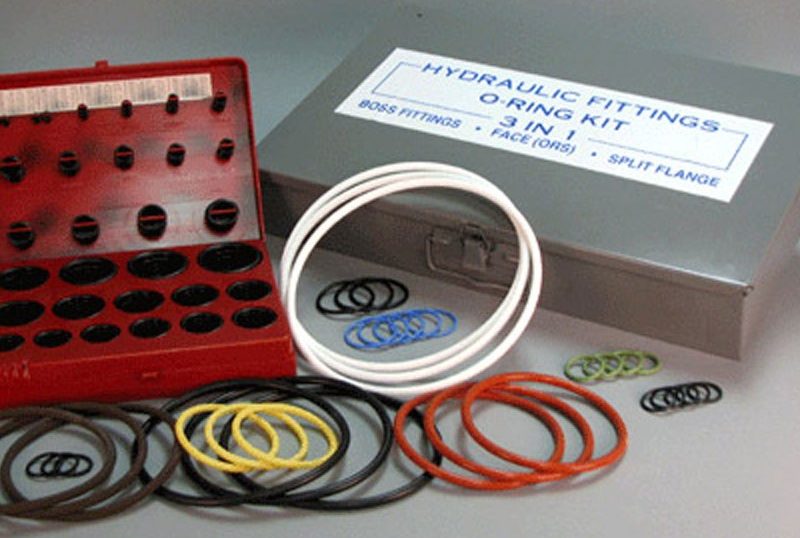An O-Ring is a mechanical gasket in the shape of doughnut-shaped ring. O-Rings are ideal for placement in a groove and compression during assembly between two or more parts. It is a loop of elastomer with a round cross-section which creates a seal at the interface. They are one of the most common seals in machine design today.
The Purpose of O-Rings
How O-Rings Work
Generally, the purpose of O-Rings is to block a pathway that fluid or air may escape through, as it is a sealing device. When squeezing the O-Ring between two surfaces, it takes up the clearance and blocks the pathway that the fluid or air wants to escape through.
Also, the rubber of an O-Ring has muscle-memory when squeezed. Simply put, it wants to go back to its original shape. This memory is how the O-Rings seal under low to no pressure. With the application of pressure, it squeezes the O-Ring against the wall of the groove forcing it to expand in the opposite direction helping the O-Ring to seal against the walls of the groove.
Materials and Varieties
O-Rings are made from various types of materials, dependent upon the application. Some O-Rings are exposed to noxious chemicals or tremendous heat. Therefore, different materials are necessary for different scenarios. O-Rings can consist of the following:
- polyurethane
- silicone
- neoprene
- nitrile rubber
- fluorocarbon
- numerous other elastomers
In addition, there are also a number of standardized O-Ring sizes, but they don’t always need to be circular. For different types of applications, there are different shapes, which include squares, x-shapes and others.
Applications
O-Rings offer many benefits to an assorted collection of applications. They are inexpensive, easy to install and, with proper maintenance, can withstand a significant amount of wear and tear. Additionally, because of this versatility, O-Rings prevent leakage in a number of places.
For example, hydraulic cylinders move very quickly and put a massive amount of pressure on their seals. The O-Ring can handle this. In addition, they can function properly in numerous other types of equipment that would not seem apparent. These include laptops and computer mice. However, O-Rings are most dominant in the automotive and aerospace fields.
Benefits of O-Rings
A few of the many benefits of O-Rings include the following:
- O-Rings seal over a wide range of pressure, temperature and tolerance
- The symmetry of the O-Ring’s circular cross-section allows for sealing in any direction
- Easy of service, no smearing or re-tightening
- They do not require any special installation tools or primers
- They are capable of bidirectional sealing
- No critical torque or tightening, so it is unlikely to cause structural damage
- O-Rings typically require very little room and are light in weight
- In many cases, you can re-use an O-Ring
- O-Rings are cost-effective
- The duration of life in the correct application corresponds to the normal aging period of the O-Ring material
- They consist of a variety of compounds that can resist virtually all aggressive chemicals and environmental application
- O-Ring failure is usually gradual and easily identifiable
These are just the basics of O-Rings, as well as the purpose of O-Rings for various applications. Contact Bryan Hose & Gasket with the link below for more information!

